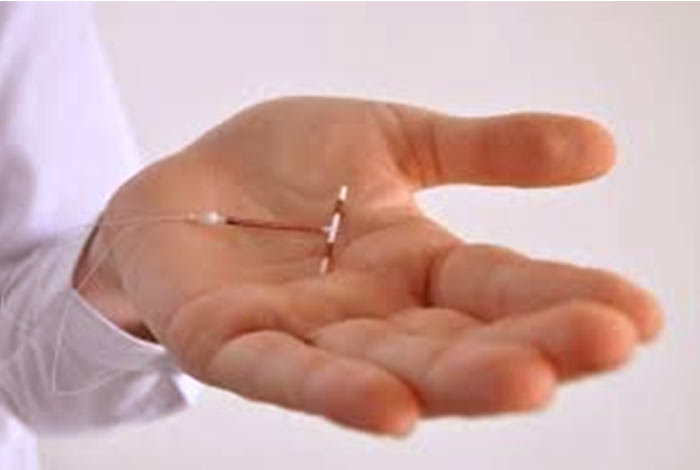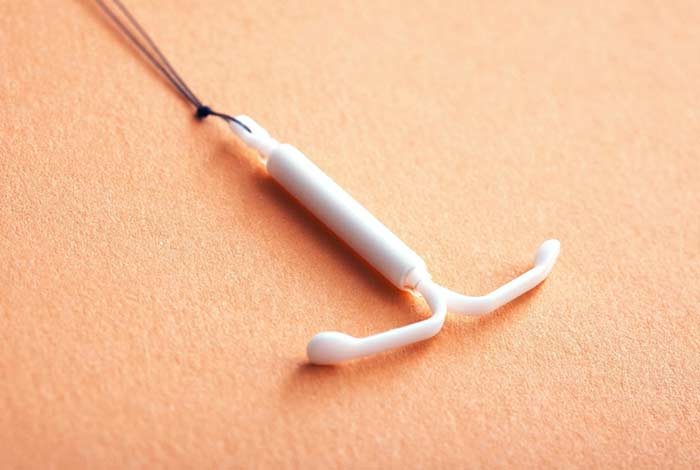
Know More About IUDs – Tiny Yet Very Effective Birth Control Devices

There are many ways in which a woman can avoid pregnancy. According to CDC, about 99% of women who were sexually active used a contraceptive at some point of time from 2006 to 2010. Discussed in this post are advantages, disadvantages, working of contraceptive methods like IUDs. IUDs or Intrauterine devices are 99% effective in avoiding or preventing pregnancy. These are effective for up to 12 years. But a survey from Urban Institute [1] in 2016 confirmed that many women are not yet aware of these reversible and longer acting contraceptives. So, we are sharing with you some information about IUDs
What are IUDs?
IUDs are tiny, T shaped devices with size about one quarter or smaller than that. These are made from plastic.
These devices cannot be administered by women on their own but they will have to visit a gynecologist to undergo this procedure.
The procedure is very simple and can be done very quickly in just about 5 minutes.
First the woman is given a medicine for numbing the uterus and opening the cervix so that there is no discomfort. Then the speculum is inserted in the vagina to make space for tool along with IUD. A medical professional then inserts the device into the woman’s uterus The IUD will move through the cervix opening into the uterus.
Working of IUDs
IUD works as a barrier that prevents the man’s sperm from coming in contact with the woman’s egg thereby preventing conceiving. The U.S FDA has given a green signal to some brands.
Depending on the type of the device, these devices alter the way sperm cells move.
Some IUDs are packed in copper. Copper intervenes [2] with the functioning of the sperm and prevent the sperm from coming in contact with the egg. These copper IUDs start working right after these are implanted in the uterus and can effectively work for up to 12 years, preventing pregnancy.
Other devices make use of hormone progestin which is quite similar to progesterone that is made naturally by the woman’s body. Progestin also helps avoid or prevent pregnancy. It makes the mucus on the cervix thick, traps and blocks the sperm thereby preventing it from reaching the egg. The other way how it prevents pregnancy is that it stops the egg from getting released from the ovaries. If there is no egg, there is no chance of pregnancy.

Advantages of IUD
Just about anyone can use IUD and this is a low maintenance birth control measure.
After it has been implanted by a medical professional, nothing else needs to be done on the end of the user to avoid pregnancy.
The effectiveness stands at more than 99% which means less than 1% of the women will get pregnant despite using IUD.
It is not permanent. If a woman decides on getting pregnant she can get it removed quickly and easily without her fertility getting affected.
Copper IUD [3] is a great emergency contraceptive. If it is inserted after 5 days of having unprotected sex, it will definitely or 100% prevent pregnancy. Women who bleed heavily during menstruation also find relief with some IUDs as these produce changes in hormones which sometimes decreases the menstrual flow and sometimes stop bleeding completely.
Dr. Anne Davis, Medical Director, Physicians for Reproductive Health says that sometimes women do not like that their periods have stopped completely so it is essential to understand how a woman would feel about the changes in their period and decide a device accordingly.
Disadvantages of IUD
Women who get heavy periods may not find copper IUDs useful as they can cause heavier and longer periods, says Davis.
Further, IUDs do not provide protection from sexually transmitted diseases (STDs) Users must use a condom to prevent this risk.
It can be too expensive. Only few insurance cover IUDs at low prices, others don’t. On the higher end, it can cost up to 1300 USD. This price is inclusive of the medical examination and follow up visits and since it lasts for so long, the price can spread over the time duration.
You may experience muscle cramps and pain in the back after the insertion. Doctors recommend using a hot water bottle or OTC medicines for pain relief
Sometimes the IUD comes out causing the pregnancy. In such cases it can be replaced. It happens in about 3% of the women.
Generally, it does not happen but a woman may get a bacterial infection upon its placement. If the device gets inserted too far in the vagina, surgery may be required to remove it. The chances are minimal to the extent of about 0.1%
Davis says that many people are going for IUDs since the time it has become imperative for birth control to get covered by insurance.
Davis adds that IUDs are a great option for women, particularly for those who need birth control over a longer time duration.










